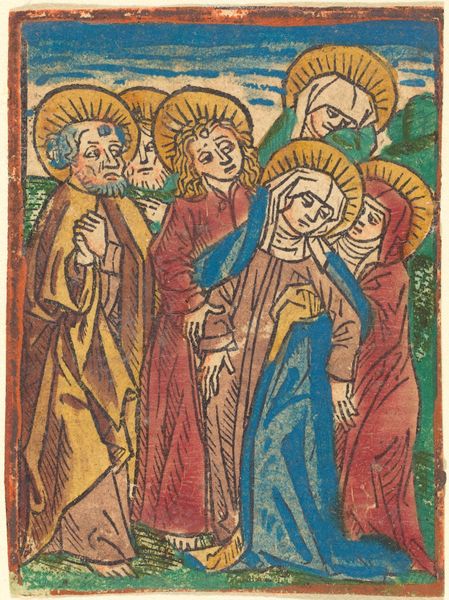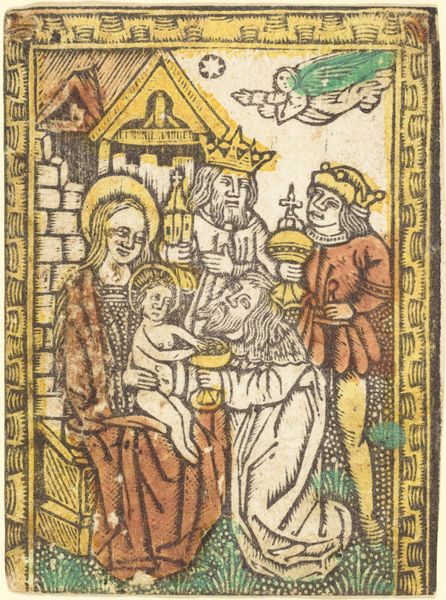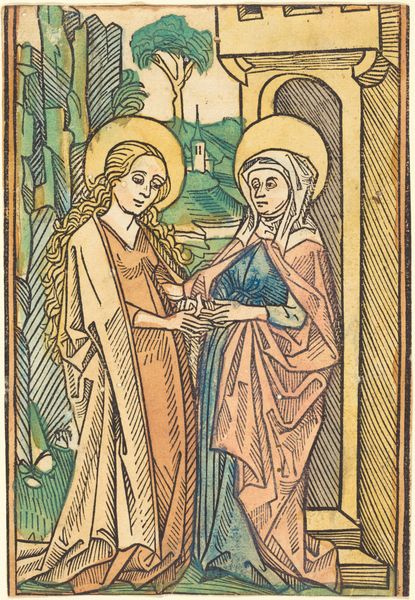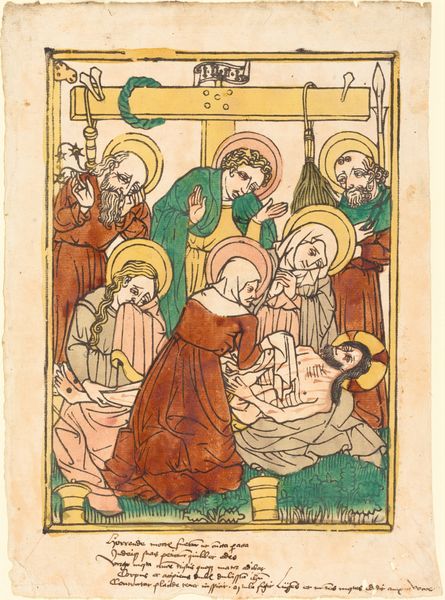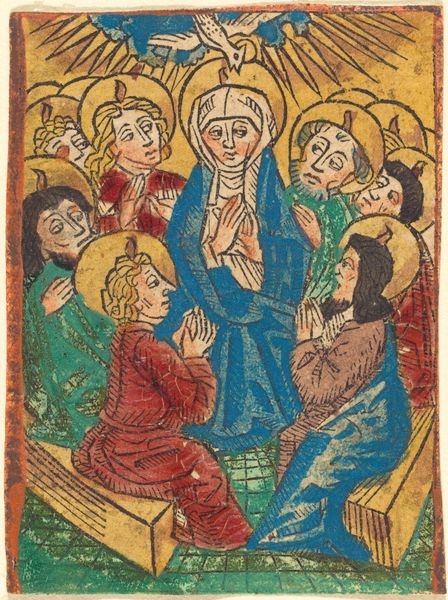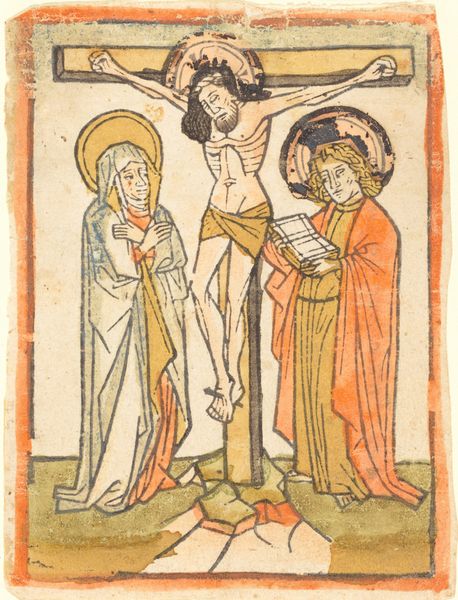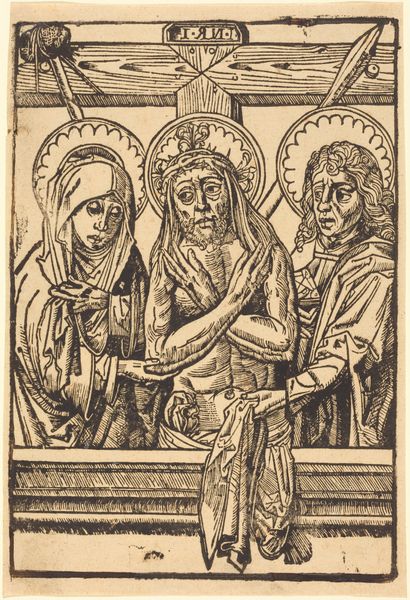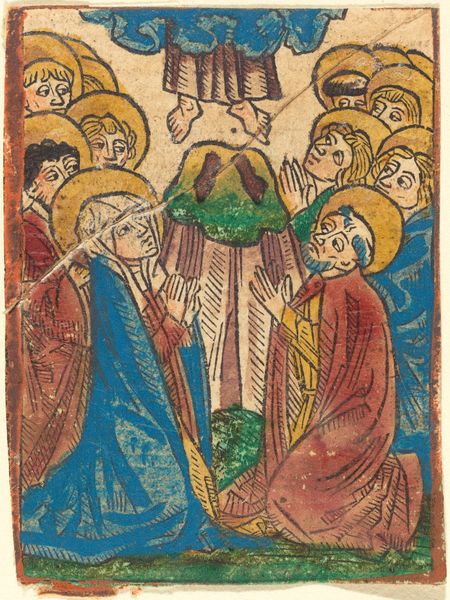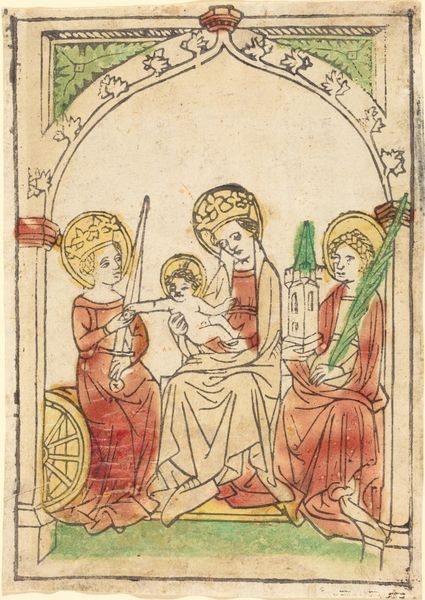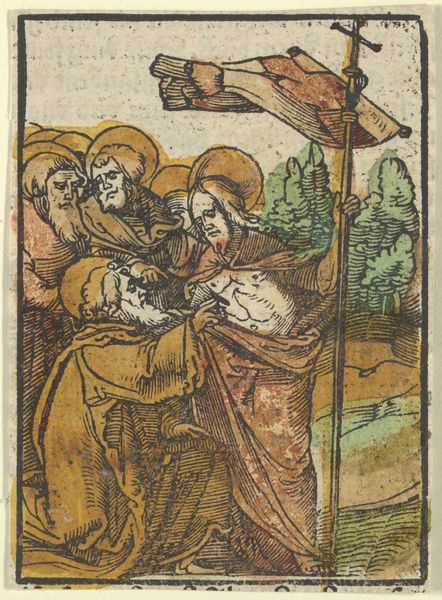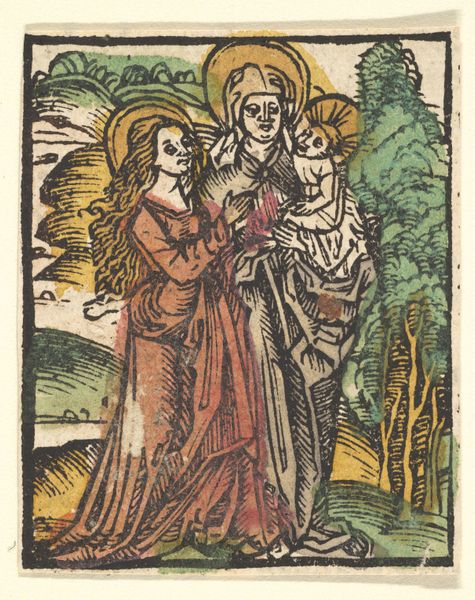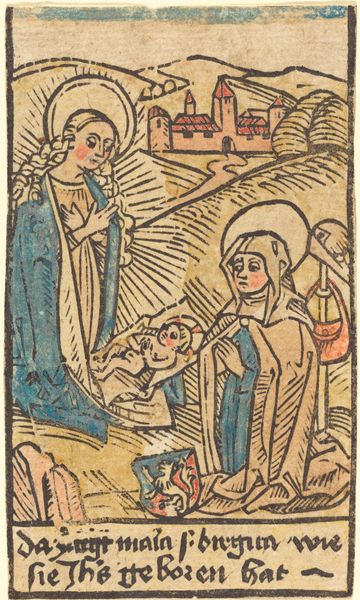
print, woodcut
#
medieval
# print
#
figuration
#
coloured pencil
#
woodcut
#
northern-renaissance
Copyright: National Gallery of Art: CC0 1.0
Editor: This is "Presentation," a woodcut made around 1490 by an anonymous artist. The colours are really striking and vibrant. What’s interesting to you about this particular print? Curator: The vibrant colour certainly catches the eye. But let’s think about the historical and social context. This print depicts the Presentation of Jesus at the Temple, a powerful visual symbol in the late medieval period, especially considering the debates about faith, ritual and devotion at the time. How does the print engage with those conversations? Editor: So, it’s not just a straightforward religious scene? Curator: Exactly. Consider how the female figures are positioned—Mary, her gaze lowered, almost submissive. Does that imagery align with the dominant social structure and gender expectations of the era? Or, does the vibrant colour challenge expectations? Remember, colour wasn't just decorative; it was often symbolic and expensive. What do you think? Editor: It is quite small. Was this affordable to all, or just the wealthy? I see how the representation could serve the patriarchy or possibly gently critique it by simply including these women in a place that excluded women at the time. I appreciate that you frame these works as holding up mirrors to society, reflecting the era's debates and concerns. Curator: And remember the woodcut as a medium. Accessible, reproducible, but also a means of spreading particular ideas quickly. Thinking about audience and dissemination, what sort of meaning does this add to it all? Editor: So the themes of affordability and the male gaze might not be accidental. Considering art as a conduit for these discussions shifts how I view art history! Curator: Absolutely, and by seeing "Presentation" within these frames, we begin to uncover richer stories and raise important questions.
Comments
No comments
Be the first to comment and join the conversation on the ultimate creative platform.
